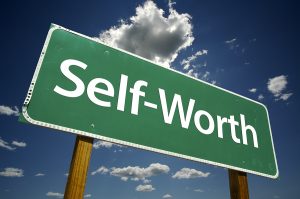The Scientific Approach to Keeping New Year’s Resolutions
 Effective tips to help you make a change…
Effective tips to help you make a change…
I have mixed feelings about New Year’s resolutions. On the one hand, I am all for setting goals and going after what you want in life. On the other hand, I see a problem with the way many people view and treat themselves when it comes to making a change. Many of us make resolutions based on a critical and faulty way of seeing ourselves to begin with, but even if we set realistic goals about meaningful things we want to change, we tend to beat ourselves up the minute we face a setback or make a mistake.
The problem with this attitude toward ourselves isn’t just that its painful to experience, but that it actually interferes with our ability to make and maintain the changes we desire. So, how can we adopt a new strategy for this new year that can help us meet our goals? Here are some effective, science-based tips that can guide us on a path to personal growth.
1. Assess your readiness
Dr. John Norcross, psychologist and author of Changeology: 5 Steps to Realizing Your Goals and Resolutions, says there are five possible stages we may be in in relation to making a change, and our actions should reflect the stage we’re in. Leap in too soon, and we may be setting ourselves up for failure. Norcross has drawn from 30 years of intensive research to conclude what works when it comes to making change. The five stages he describes are precontemplation, contemplation, preparation, action, and maintenance.
In the precontemplation stage, we may feel pressure to change, but the things we specifically want to shift may not be totally clear to us yet, and we may even be resistant to changing our behavior. Norcross suggests that people in precontemplation probably shouldn’t try to take action quite yet.
If we’re in contemplation, we may be starting to consciously consider changes we wish to make, but we’re probably feeling pretty ambivalent. We may lack confidence or certainty. This is a good time to weigh the pros and cons of making a change, says Norcross. We might start to take little steps, by making early preparations or “getting tools in order” that we’ll need along the road.
If we’re in preparation, we’re nearly ready to take action. We’re setting the stage with tasks like getting our energy level up, ensuring we have time for the actions we need to take, assembling a support system, setting dates and goals, and talking to others about our intentions.
Just like it sounds, the action stage is the time for us to start taking the actions we set out to alter. Once we’re on track, we can move into maintenance. While many people think of this as the most challenging stage of change, by having been attuned and sensitive to ourselves in moving through the first four steps, we’re likely to feel much stronger and more resilient in this fifth and final stage.
Determining our stage of readiness can help us break the cycle of one step forward, two steps back that often demoralizes us in relation to our goals. To help with this, Norcross’s website even offers assessments to determine if we’re ready to make a change.
2. Get ahold of your critical inner voice
One of the reasons it’s such a challenge to stick with any step we’re taking toward our goals is that we all have an inner critic driving a wedge between where we’re at and where we want to be. Like a cruel coach, this voice in our heads serves to demoralize, demean, and undermine us, and it tends to get a lot louder when we attempt to make a change.
For example, if our goal is to get healthier by exercising more, our critical inner voice may feed us thoughts that at first seem friendly, such as:
- Just sleep in a little longer. You can’t run today. You need your rest.
- Wouldn’t it be nice to head straight home instead of going to the gym? It’s been a tough day.
- You did well yesterday. Take it easy and start again tomorrow.
The trouble is, once we’ve taken its advice, the tone of our inner critic quickly changes:
- You are so lazy. I told you that you’d fail at this.
- You never follow through with anything. You look terrible. Just give up.
- You thought you were doing well? You’re fooling yourself!
If we want to empower ourselves to make a change, we have to combat this internal enemy. Here are some steps to help counter our critical inner voice.
- Identify: Start to notice when “voices” creep into your thought process. Often, right before we start to feel bad or discouraged, there’s a little voice in our heads sending us a message. That voice can be mean and outright attacking, “Ugh, you sounded like an idiot. Just shut up already.” It can be subtle or sound self-protective, “Are you sure you want to ask your boss for that meeting? You may embarrass yourself.” It can even seem self-soothing, “Just have another drink. You deserve to feel good.” Every single one of these voices leads us to a path of self-limiting or self-destructive actions that interfere with our real goals.
- Write them down: As an exercise, write down your critical inner voices in the second person, as “you” statements. (i.e. “You are so stupid. There’s no way you can do this.” as opposed to “I am so stupid. There’s no way I can do this.”) This can help us separate our inner critic from our real point of view. Try to notice your “voices” each time they arise, and make it a practice to record them, whether on your phone, your computer, or in a notepad.
- Respond: Next to each “critical inner voice” you’ve listed, write down a compassionate and more realistic response. Think of what you would say to a friend who said the same thing about themselves. This time, write in the first person, as an “I” statement. (i.e. “I am not stupid. I challenge myself to learn new things and work hard to achieve goals. It may take me a little time to understand certain things, but I am resilient and completely capable of doing this.”) The point of this exercise isn’t to build ourselves up, but to have some self-compassion and believe in our real capabilities.
When we first make changes, we should fully expect our critical inner voice to get louder. This is part of why it can be harder to maintain a change than to make it in the first place. Yet, one of the most empowering tools we keep in our toolbox is our determination to consistently challenge our critical inner voice.
3. Practice self-compassion
We all want to have healthy self-esteem, but perhaps a better goal is to embrace more self-compassion. Unlike self-esteem, self-compassion is not based on evaluating ourselves or comparing ourselves to others. In her extensive research on the subject, Dr. Kristin Neff, has found that self-compassion can help us to make changes that matter to us. It is associated with “greater emotional resilience, more accurate self-concepts, more caring relationship behavior, as well as less narcissism and reactive anger.” Moreover, as Neff concluded based on her studies:
Self-compassionate people have more intrinsic motivation in life — trying hard because they want to learn and grow, not because they need to impress themselves or others. Self-compassionate people are more likely to take responsibility for their past mistakes, while acknowledging them with greater emotional equanimity. Research also shows that self-compassion helps people engage in healthier behaviors like sticking to their weight-loss goals, exercising, quitting smoking and seeking medical care when needed.
So, what does it mean to have more self-compassion? First, we have to practice self-kindness over judgment. That means cultivating a gentle, compassionate attitude toward ourselves and whatever we’re going through, rather than assessing and critiquing. In other words, regarding ourselves the way we’d regard a friend. When we do this, we are much more likely to stick with things and challenge ourselves further.
The next element of self-compassion is mindfulness as opposed to over-identification. This means allowing our negative thoughts and feelings to come and go without attaching ourselves to them too strongly or judging ourselves too harshly. We can be curious about our thoughts and reactions without allowing them to sweep us up and overwhelm us. This practice is particularly helpful when we’re making a change, because challenging an old sense of identity can stir up our critical inner voices or trigger deep emotions from our past. By taking a mindful approach to whatever arises inside us, we can be like a mountain in a storm, allowing it to pass without being carried off course.
The last element of self-compassion is accepting our common humanity as opposed to feeling isolated and different. This attitude involves seeing ourselves and our struggles as part of a shared human experience. Everyone experiences pain and difficulty. We are not alone. We can depend on others and extend ourselves to them. We can give up any attitudes of self-loathing or victimization as well as any expectations of grandeur, because we are simply a worthy human being like every other worthy human being. Embracing this belief can free us of unrealistic pressure as we continue on our path, strengthened by the knowledge that the challenges we face are just part of being a person.
What we can take away from research is that making changes involves some degree of preparation, but once we’re in the thick of it, what we really need is a solid combination of self-compassion and grit. We need to stay strong and resilient when it comes to standing up to our critical inner voice, but we must also remain gentle and kind when it comes to the way we treat ourselves and any setbacks we face. Therefore, whether or not we set a New Year’s resolution this year, whatever that resolution may be, and whatever stage we’re in in relation to it, we could all benefit from standing up to our inner critic and embracing more self-compassion.
Tags: goal, goals, New Year's, new year's resolutions, New Years Resolution, personal goals, personal growth, psychological advice








